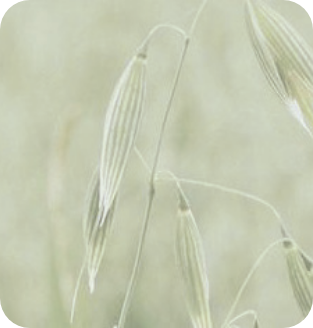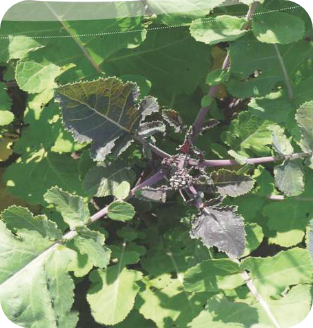- Mon - Fri 07:00 - 17:00
Let’s Grow – Better Soil








–Terranova This variety has been specially bred to reduce a broad range of nematodes.
–Terranova is frost resistant up to minus 8° C.
–Terranova is a radish that works on nematode problems as well as increasing yours ground health while it grows AND when it is worked in.
-Will increase Quality and quantity in cash crops.
-Reduces fungal and bacterial diseases.
-Over 200 ton of green manure per Ha.
-Easily worked back into the ground.
–Terranova is very leafy at the early stages of growth and is easily incorporated for maximum nematode control and is club root resistant.
-It has unique resistance to (sub-) tropical root-knot nematodes M. incognita M. Javanica.
–Terranova is Resistance to: Heterodera schachtii (BCN) Heterodera betea Meloidogyne chitwoodi M. fallax Meloidogyne incognita and javanica Para trichodorus allius.
–Terranova is non-host to: Globodera rostochiensis G. Pallida Heterodera avenae Heterodera goettingiana Meloidogyne naasi Ditylenchus dipsaci Ditylenchus destructor Tobacco rattle virus (TRV).
-This variety has been specially bred to reduce nematodes.
–Doublet is a radish that works on nematode problems as well as increasing yours ground health while it grows AND when it is worked in.
-it has a Tap root that grows up to 2m deep
-it has a unique combination of the highest resistance to beet-cyst nematodes and Root-knot nematode resistance.
-When worked in correctly it can bring down lesion nematodes.
-Frost Resistance to up to -6 Degrees Celcius.
–Doublet is very leafy at the early stages of growth and is easily incorporated for maximum nematode control and is club root resistant.
– Doublet flowers late and will not set seed when sown in late summer or early autumn
-Reduces fungal and bacterial diseases.
-Over 200 ton of green manure per Ha.
-Will increase Quality and quantity in cash crops.
-Easily worked back into the ground.
–Japanese oats is a cereal crop which has a high early vigour and flowers relatively early.
– Drilled at the right rate, this crop can produce, in a relatively short period of time, high amounts of biomass.
– Specific varieties are non-host to the root lesion nematode Pratylenchus penetrans Meloidogyne chitwoodi.
-Very good cover crop.
Increasing yeild and quality.
(Raphanus Sativus.)
-The variety Adios is very resistant to Beet-cyst nematode (Level 1).
– Although it is a slow starter, it will flower late and not set seed when sown in stubble.
-Will increase Quality and quantity in cash crops.
-Reduces fungal and bacterial diseases.
-Over 200 ton of green manure per Ha.
-Easily worked back into the ground.
– Say Adios to your beet cyst nematodes!
In South Africa with our hot African sun, JSF has worked out that planting +-27kg/Ha is the
ideal rate for SA
Depending on your soil type will determine if you need fertilizer or not. Most soils will need
Nitrogen with your Bladrammenas. However you do not lose any fertilizer added to your
Bladrammenas as you work the crop back into your soil. Your following cash crop will need
little if any fertilizer after Bladrammenas.
Bladrammenas does need a reasonable amount of water. JSF believes that the better you
treat your Green crop, the more benefits you gain from it. (The more you put in, the more
you get out.).
In South Africa, Bladrammenas can be planted throughout the year in all areas.
Bladrammenas can handle -12 degrees Celsius temperatures.
Depending on the time of year, Bladrammenas can increase lice populations, especially in
dry times, as lice are attracted to moist areas/crops. However lice can be easily sprayer and
eliminated. The benefits gained from Bladrammenas far outweigh the very few negatives.
Mustard only works on nematode control when it is worked back into the ground.
Bladrammenas works on nematode control while it grows and when it is worked back into
the ground.
It all depends on your soils condition. But varies between R1500 and R3000.
It is extremely important to plant Bladrammenas correctly. Ideally with a fine seed planter
where the rows are no more than 17cm apart but ideally 12cm apart. The row spacing and
rate of 27kg/Ha is extremely important for your nematode control.
When working Bladrammenas back into the ground, you need firstly to mulch or chop any
green material on top of the ground as fine as possible. By doing this you release ITC’s or a
methane sodium gas which is your bio fumigation gas. This gas works on fungal and bacterial
diseases and parasitic nematodes. However this gas is still on top of the ground and we need
to get it into the ground ASAP. Therefore once the crop is mulched you need to plough it
back under the ground as quick as possible to get the bio fumigation under and into your
soil.
Because you work so much green manure back into the soil, as well as a bio fumigation
process taking place. We say you need 10 to 14 days from when you work the
Bladrammenas into the ground and planting your cash crop. The soil must be irrigated after
worked in and then left alone for the rest period.
Yes. But they need roughage as well to prevent runny tummies.
We take ground samples before and after each block of Bladrammenas planted. All samples
go through Nemlab in the Western Cape.
All soils differ. However an average of 3 cash crops then back to Bladrammenas is
recommended.
You need to make sure that there is no weeds on the ground. And a deep rip to help root
development which will help in decreasing parasitic nematodes.
Chemicals work on nematode control very well, however no better than Bladrammenas
does. The big difference is that when chemicals are used, both good and bad soldiers in your
soil are eliminated. So if a disease climbs into yours cash crop, there will be nothing fighting
back and the likely hood of you having any crop is very slim.
When using Bladrammenas, you are eliminating your bad guys, but increasing your good
ones. You are essentially building your soils up to be more resistance t diseases. Creating a
win win situation.
This is because there is a Bio fumigation process happening in the ground. This process
decreases chances of fungal and bacterial diseases. And reduces parasitic nematodes even
more.
On top of that, your soil is busy digesting soooo much green manure at this time, its focusing
all its energy on this process. Now should you plant a cash crop during this process, your soil
now has too much to do and can focus one a single tank and doing it properly. So either the
bio fumigation will not be done top its full potential or more than likely your germination on
the cash crop will be below average
Bladrammenas needs 3 month to grow and reduce parasitic nematodes to a minimal.
However it can be grown and let stand for up to a year to increase green manure. This will
increase you’re waiting period from when you work the crop back in from 2 weeks to 4
weeks. This is due to the Bladrammenas would have become more woodier and harder, so
the breaking down process will take longer.
Bladrammenas needs 3 month to grow and reduce parasitic nematodes to a minimal.
However it can be grown and let stand for up to a year to increase green manure. This will
increase you’re waiting period from when you work the crop back in from 2 weeks to 4
weeks. This is due to the Bladrammenas would have become more woodier and harder, so
the breaking down process will take longer.